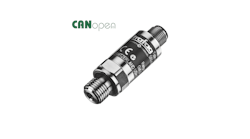Water and energy are two resources on which all of modern society depends. As demands for each increase, researchers look to alternative technologies that promise both sustainability and reduced environmental impact. Yale University (www.yale.edu) researchers, Menachem Elimelech, Chair of Chemical and Environmental Engineering, and Environmental Engineering doctoral student, Robert McGinnis, propose engineered osmosis as a key to addressing not just one resource challenge, but both. In a recent publication featured in Environmental Science & Technology, Elimelech and McGinnis propose engineered osmosis as an answer to the global need for affordable clean water and inexpensive sustainable energy.
The solution to these resource challenges may lie in the design of osmotically-driven membrane systems, capable of producing freshwater from nonpotable sources, including seawater; producing electrical power from naturally occurring salinity gradients; and generating electricity from low-temperature heat sources, such as reject heat from thermal processes and conventional power plants.
According to the authors, desalination and reuse are the only options for increasing water supply above that which is available through the hydrologic cycle, but both, utilizing conventional technologies, rely on substantial energy input. "The ideal solution is a process that would effectively utilize waste heat," says Elimelech in a prepared statement. A technology designed to fit this criteria is forward osmosis (FO). Unlike the more familiar reverse osmosis, FO exploits the natural phenomenon of osmosis — diffusion of water through a semi-permeable membrane from a solution of low solute concentration to a solution of high solute concentration. Utilizing a "draw" solution of concentrated salts, which can be readily removed with low temperature heat, researchers are able to effectively desalinate water with little electrical energy input.
Utilizing another tool of engineered osmosis, the osmotic heat engine (OHE), Elimelech and McGinnis believe that it is possible to economically produce electricity from lower-temperature heat sources, including low quality geothermal heat and waste heat, using the principals of pressure-retarded osmosis (PRO). In PRO, the "draw" solution is placed under high hydraulic pressure. As water moves into the pressurized draw solution, a portion of the expanded volume is reduced in pressure through a hydroturbine to generate electricity.
To read the full article on the engineered-osmosis method detailed here, visit pubs.acs.org/doi/full/10.1021/es800812m.

